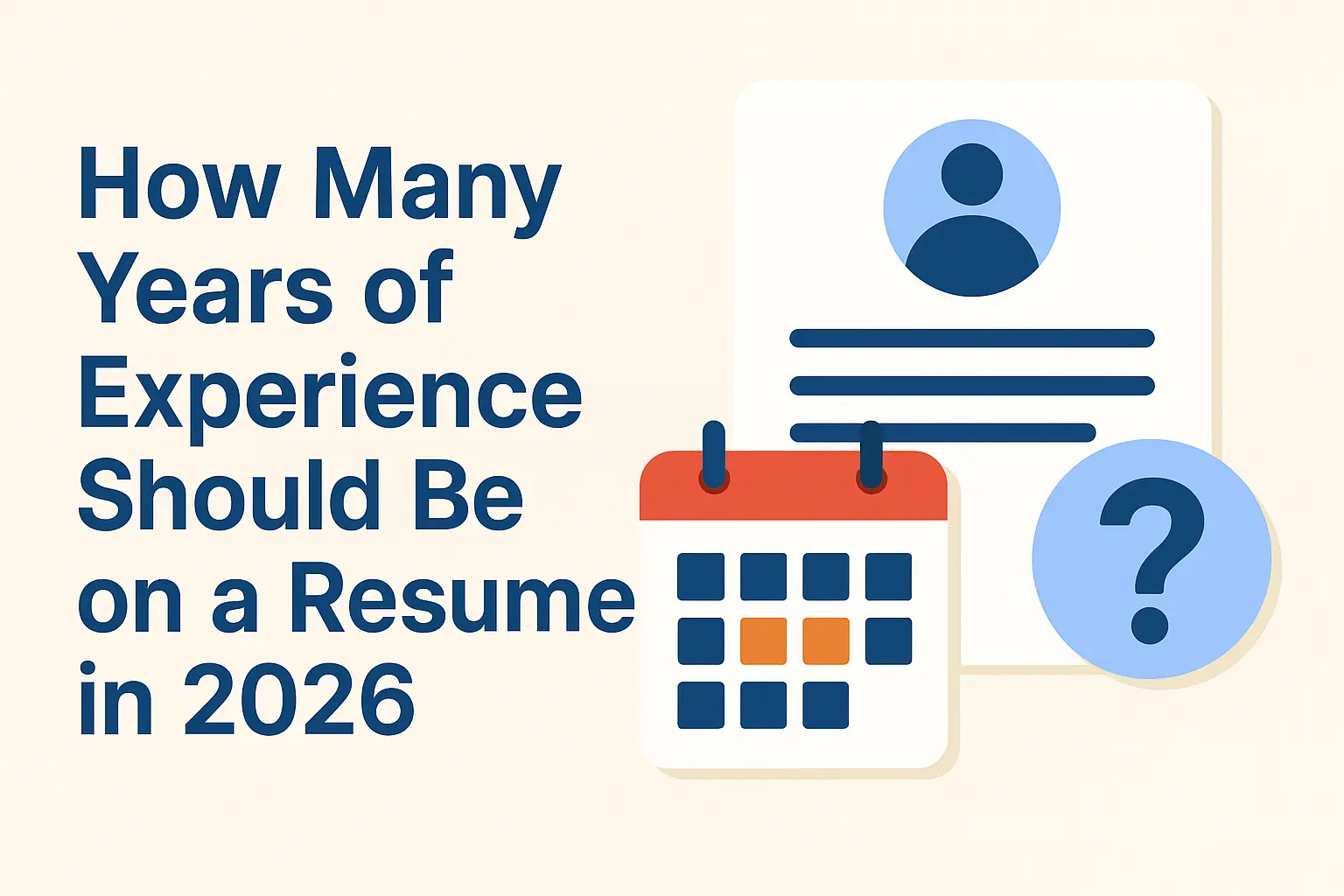When you build your resume, focus on clarity and relevance instead of trying to fill space. Recruiters spend only a few seconds scanning for results and recent achievements. The goal is to present your most valuable experience quickly and confidently.
Why Resume Length Matters for Hiring Managers and Recruiters
Your resume is a short introduction to your professional story. Hiring teams look for signs that you can deliver results now, not what you achieved twenty years ago. Cutting old or irrelevant jobs helps your resume pass applicant tracking systems and makes it easier to read.
A focused resume also shows that you can communicate efficiently. Recruiters prefer candidates who can summarize long careers into a clear snapshot of measurable results and current skills. Keeping your document concise highlights the work that proves your value today.
Too many outdated positions can:
- •Hide your most recent achievements
- •Make your career path look unfocused
- •Lead to unintentional age bias if older dates reveal early roles or graduation years
A well written resume tells a short, powerful story of growth in one or two pages.
The 10 to 15 Year Rule
Most recruiters recommend showing the last ten to fifteen years of relevant experience. This span displays career growth, modern skills, and current expertise without overwhelming the reader.
This range usually includes your last three to five positions, the ones that show measurable outcomes or promotions. It keeps your document short and precise.
Why the 10 to 15 Year Range Works
Large employers such as Deloitte or Amazon value recent experience because it shows that your skills align with current standards and technology.
Adjusting Resume History by Career Stage
How far back you go depends on where you are in your career. Use the table below to decide what fits best.
| Career Stage | Recommended Years to Include | Focus Area |
|---|---|---|
| New or Early Career | 1 to 5 years | Internships, projects, part-time work, and coursework that prove skill readiness |
| Mid-Career Professional | Around 10 years | Promotions, leadership examples, quantifiable achievements |
| Senior or Executive | Up to 15 years | Strategic impact, board or profit-and-loss results, summarized earlier roles |
| Specialized Roles | As required | Extend if older experience proves unique fit for a role |
Guidance for Early Career Candidates
If you are preparing a new people CV, highlight potential and transferable skills. Include internships, school projects, and volunteer work that show initiative and measurable outcomes.
Skip unrelated high-school or short-term jobs unless they demonstrate skills relevant to your target field. Keep bullet points short and results-focused.
For help balancing your experience with technical ability, read How Many Skills Should You List on a Resume? to choose the right number of skills without crowding your document.
Guidance for Mid-Career Professionals
If you have about a decade of experience, focus on your most recent ten years. These roles usually show your strongest accomplishments and leadership development.
Include evidence of:
One to two pages is ideal for this level, keeping your best results front and center.
Guidance for Senior Professionals and Executives
Executives can include up to fifteen years of detailed experience while summarizing earlier history. Begin with a short professional summary such as:
"Operations executive with twenty-five years improving performance and profitability."
Then highlight two or three career achievements that define your leadership impact.
If older roles are important, create an "Earlier Career" section listing job titles, employers, and dates. Senior resumes can extend to two or three pages if each section provides measurable value.
When Less Than Ten Years Makes Sense
A shorter history is useful when you are new to the workforce, changing careers, or focusing on recent freelance or project work. Present relevant volunteer or contract projects as professional experience with dates and outcomes.
Avoid padding your resume with unrelated roles. If older jobs are important for context, list them briefly or under a separate heading.
Including Older Experience Without Making the Resume Too Long
If you have decades of work history, summarize the early years effectively.
Editing Checklist to Keep Your Resume Focused and Current
| Focus Area | Action | Benefit |
|---|---|---|
| Skills | Remove outdated tools and list certifications | Demonstrates current expertise |
| Length | Keep to one or two pages | Improves readability and recruiter focus |
| Dates | Use consistent year format only | Builds credibility and prevents confusion |
| Customization | Tailor each version for specific job descriptions | Increases relevance. See Should You Change Your Resume for Every Job? |
| Achievements | Quantify outcomes wherever possible | Shows measurable impact and confidence |
Conclusion
Your resume is a marketing document, not a full autobiography. For most professionals, listing the last ten to fifteen years of experience gives the perfect balance between depth and focus.
Be flexible with this rule. Show fewer years if you are just starting out, and extend the range slightly if you are applying for a senior or specialized position.
Focus on achievements that match the job description and edit ruthlessly. Direct hiring managers to your LinkedIn profile for a full history, but keep your resume concise. A clear, tailored document communicates growth, relevance, and results that help you stand out in 2026.
FAQ
How many years of experience should be on a resume?
Usually ten to fifteen years, concentrating on the achievements that matter most to your target role.
Why limit older jobs?
Older positions may not reflect your current skills. Trimming them keeps your resume clear and focused.
Can I include more than fifteen years?
Yes, when a senior or specialized position requests deeper background. Summarize older jobs in brief.
What if I am just starting my career?
Include internships, coursework, and measurable projects from the past one to five years.
Should I remove graduation dates to avoid age bias?
Yes, if you have a long career. Summarizing early experience keeps the focus on current strengths.

